 I had a lovely time in Redmond this last week attending Microsoft's PDC (Professional Developer's Conference) 2010.
I had a lovely time in Redmond this last week attending Microsoft's PDC (Professional Developer's Conference) 2010. I did lots of stuff, met lots of people, did hours of "Live TV" on Channel 9 Live and presented a talk on behalf of the Web Platform and Tools team (WPT is IIS, Media Streaming, ASP.NET, everything web, etc) showcasing all the cool stuff we've been doing lately.
You can stream the talk with Silverlight Smooth Streaming as well as PIP (Picture in Picture) or you can download the talk in one of four formats. Note that for some weird reason there's 10 minutes of "we haven't started yet" dead video that you'll have to seek past. You should Right-Click Save As the video you want.
UPDATE: All these videos have been re-squished with better in-sync audio and a shorter lead-in.
If you noticed in my recent post introducing NuGet (was NuPack) I mentioned at the bottom that I was changing roles at Microsoft. I feel strongly that the Lego pieces we're building are the right size and that the Web Platform is moving in a direction that I want to influence more than I could while working in MSDN. I'll be working with the Razor, WebMatrix, IIS Express, SQL 4 CE+EF and ASP.NET WebForms and MVC teams building community on what I lovingly call "Unnamed Package of Web Thingies." Oh, and I'll also help name this stuff. Trust me, I'm voting against the usual names you've come to love us for. Anyway.
I gave this talk. A pile of folks were involved even though it's one random dude (me) on stage to make demos like this happen. PDC talks are also kind of "here's what we're thinking and what you could do in the future" type talks, so there was a LOT of daily builds and a lot of hacks/rough code that was put together for that talk. I wanted to share it with you so you can play with it and be involved in the conversation. The scaffolding stuff I showed was a proof of concept built on a prototype resting on a sample. That said, it's certainly a direction we want to head in.
In this post I'll show you how you can do the same demo yourself (mostly) with today's bits. I'll show you what'll work today with huge hacks and bug fixes, and how it'll be better tomorrow. I'm interested in your thoughts on how you'd like things to work tomorrow. I'm mostly interested in how you/us (the community) will build better stuff with these Lego, rather than just taking this stuff and callign it done. Cause it ain't done.
Building a Blog with Microsoft "Unnamed Package of Web Love"
Of course, watch the video to see how I do it and follow along, but here's what you'll need first.'
Remember, you asked for it, so this is the crazy version. The some alternate future version would more likely be "Get VS2010 and one other thing" and it'll just work™.
- Visual Studio 2010 and ASP.NET MVC 3.
- Get whatever version is current. As of today, that's ASP.NET MVC 3 Beta. An RC will be out soon. Doesn't matter, most of this will work. I'll point out weird stuff as we go.
- NuGet Alpha Build from 10-26
- Get this alpha and install the VSIX by double clicking it. It's alpha, so expect you WILL have to uninstall it at some point. No it won't mess up your system.
- In Tools | Options | Package Manager, make sure you're pointing to http://go.microsoft.com/fwlink/?LinkId=204820. That's currently a redirect to http://feed.nuget.org/ctp2/odata/v1/. At some point in the future it'll be automatic and easy.
- Worst case scenario and you want to uninstall it, Run VS2010 as Admin, to go Tools | Extension Manager and Uninstall it.
Again, disclaimer, this isn't a tutorial for new folks to learn ASP.NET MVC. This is a behind the curtains transparent "here's what I did for this proof of concept demo and I'm interested in your feedback as fellow geeks." Read carefully.
Here's the demo.
New Project
Go File | Note the new View Engine drop down. Perhaps Spark, Nhaml, etc will get in this dropdown at some point. We'll choose Razor. Run the default template. Note that it's using Visual Web Development Server since that's what's built in.
Alpha/Beta Software Hack Warning: Now, let's pretend this is a "Choose Your Own Adventure" book. You can skip this part, or you can do this hack.
I was using daily build stuff that enabled IIS Express to be installed on its own outside of WebMatrix (our small, free Web Development IDE). You'll get this ability in the future and it'll be built into Visual Studio in some way similar to my demo. For now, you can either.
1. Don't sweat IIS Express and move on. Continue to use Visual Web Developer. Things will work fine.
or
2. Try to hack IIS Express in. Here's how, assuming you have WebMatrix installed.
Open Notepad, paste in:
SET ExecPath=%ProgramFiles(x86)%
IF "%ExecPath%" == "" SET ExecPath = "%ProgramFiles%
"%ExecPath%\Microsoft WebMatrix\iisexpress.exe" /path:"C:\PATHTOMY\MvcApplication3" /port:12345
Save this file as "thisisahack.bat" somewhere and run it. You'll start and stop this on your own, remembering that it'll be built in someday. Go into your ASP.NET MVC applications Properties, click Web, the under "Use Custom Web Server" click that radio button and paste in http://localhost:12345 as the URL.
Get a package with NuGet...I need a DB
Now, I need a database, so I'll use the new SQLCE with the Entity Framework. From inside Visual Studio, show the Package Manager Console. Two ways, either Ctrl-W then Ctrl-Z or View | Other Windows | Package Manager Console.
Alpha/Beta Software Warning: From inside the NuGet console, you'll install a bunch of beta libraries with this command:
Install-Package SQLCE.EntityFramework
After this you'll get:
Successfully installed 'SQLCE.EntityFramework 4.0.8435.1'
Successfully added 'SQLCE 4.0.8435.1' to MvcApplication3
Successfully added 'EFCTP4 1.0' to MvcApplication3
Successfully added 'WebActivator 1.0.0.0' to MvcApplication3
Successfully added 'SQLCE.EntityFramework 4.0.8435.1' to MvcApplication3
Note the stuff that got added to your references and the new AppStart_SQLCEEntityFramework.cs that showed up. This is using the EFCTP4 (Entity Framework Magic Unicorn) I've blogged about before as well as SQL Compact Edition 4, a tiny xcopyable file based SQL Server. BOTH of these are not released products. All these came down off the live NuGet feed and will most likely be updated as they can be.
Create Models
Make a new file in the Models folder called something like BlogContext.cs. Put this in it and confirm you have the right namespaces. Something like this:
using System;
using System.Collections.Generic;
using System.Data.Entity;
namespace MvcApplication3.Models //yours will be different
{
public class Post
{
public int ID { get; set; }
public string Title { get; set; }
public string Text { get; set; }
public DateTime PublishDate { get; set; }
public virtual ICollection<Comment> Comments { get; set; }
}
public class Comment
{
public int ID { get; set; }
public int PostID { get; set; }
public string Text { get; set; }
public string Author { get; set; }
}
public class BlogContext : DbContext
{
public DbSet<Post> Posts { get; set; }
public DbSet<Comment> Comments { get; set; }
}
}
This should compile at this point. Now I need a controller for this blog of ours. Instead of making in with the Add Controller dialog, I'll go back to the Package Manager Console.
Create Controller for Blog
Install a new package...this time some totally horrible experimental scaffolding that started with David Ebbo, squeezed by David Fowler, then ruined by myself.
Alpha/Beta Software Hack Warning: There's blood on all our hands for this one. Feel free to dig into this package, if you can handle the evil, and look at some of the ideas being explored.
Install-Package MvcScaffold
They made me rename it. You'll be getting version 0.2. In this case, we're still using NuGet, except in an unusual way. We're not adding libraries to the project, rather we're extending the PowerShell environment with new functions.
Make sure you compile at least once before you run this! The PowerShell scripts are going to wander around in the project looking for types and they won't exist as CLR types if they haven't been compiled. One of the added method was Scaffold-Controller:
Scaffold-Controller -m Post -c BlogContext
This will creates the controller against the context and also create CRUD views.
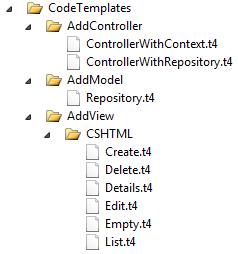 Note that you have a new folder created in your project called CodeTemplates. I've talked about T4 (Text Template Transformation Toolkit) before as well as in a recorded talk in the Netherlands called "ASP.NET MVC 2: Ninja Black Belt Tips" while wearing a horrible sweater.
Note that you have a new folder created in your project called CodeTemplates. I've talked about T4 (Text Template Transformation Toolkit) before as well as in a recorded talk in the Netherlands called "ASP.NET MVC 2: Ninja Black Belt Tips" while wearing a horrible sweater.
This CodeTemplates folder is a folder that you'll actually find deep inside the beast around: C:\Program Files (x86)\Microsoft Visual Studio 10.0\Common7\IDE\VWDExpress\ItemTemplates\CSharp\Web\MVC 3 or something similar. As I show in my Ninja video, you can copy those templates out and override them simply by putting them local to your project. Once they are local, they can be edited to do whatever we like.
Hack Warning: I'm adding these to the project and we're using them in a slightly unconventional way. T4 templates - as the tooling is today - assume they will run before your build or when a file or your project is dirty/changed. Adding all these T4 templates at once causes Visual Studio to freak out and pop up "run this template" dialogs for every template. Also, once they are added they have a Custom Tool associated with them. I have done one thing and I propose another. First, I changed the extension of these files from .tt to .t4 to prevent that dialog from coming up. Changing the extension makes Visual Studio think nothing of them. Now, I propose that 3rd party T4 tools should know about this extension and enable syntax highlighting for these files. An extension of .TT runs as usual and the .T4 extension means no tooling runs. This way .T4 files can be includes, or in my example/demo here, just files that are "along for the ride and used occasionally."
Back to the Scaffolding. The Scaffold-Controller method used the ControllerWithContext.t4 template to generate the Controller for me directly against the Entity Framework CTP4 DbContext. The Views were generated from the Razor views you see in the CSHTML folder.
Compile and it should run.
Run application and visit /Post
At this point, I actually goofed up but I didn't want to change the scaffolding as it was 3am when I realized it. I should have pluralized things and make a Posts (plural) Controller rather than a PostController. I'd like to have the Entity Framework team give me a public API for "PluralizeThisThing()" or something. There's no reason for me to know about Octopus:Octopi.
Anyway, hit http://localhost:12345/Post and you'll see:
_thumb.png)
Hit Create New, add a Post and it'll show up in the list. Yay.
_thumb.png)
Now, if you get this YSOD (Yellow Screen of Death) with SQL Compact Edition 4 CTP that declares "File already exists. Try using a different database name" here's the deal. Remember what I said about Hacks and Bugs?
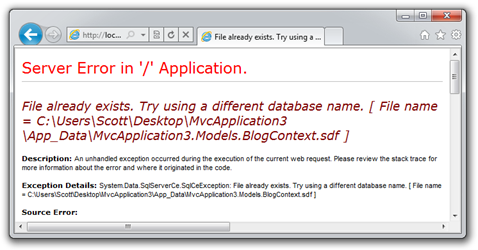
Hack Bug Work Around Warning: There's a bug in the SQL Compact Edition 4 CTP (CTP==Beta) that gets confused about if the database exists or not. If you hit this, for now, hit F5.
Choose Your Own Adventure Time. You can:
1. Hit F5 and it'll just work©
2. Change the Database Initializer (you can do that, since things are more pluggable in Microsoft land now) and introduce this hack. Yes, it'll be fixed before it comes out.
Go into your AppStart_SQLCEEntityFramework.cs file and the DefaultConnectionFactory line to this:
Database.DefaultConnectionFactory = new SqlCeConnectionFactory(
"System.Data.SqlServerCe.4.0",
HostingEnvironment.MapPath("~/App_Data/"),"");
At this point, you should be able to:
- See listing of posts (although none there to begin with)
- Create New Post, now it shows up in list.
- Click details to see the post.
At this point I have CRUD, I have a "just in time created SQL Compact Edition DB" in my App_Data folder. The code in my controller is going against the Entity Framework DbContext directly.
Trick: In my talk I showed Tooling that will let you open the SDF (SQL Database File) and make tables, edit things, etc. You don't have that because it's coming. There ARE tools out there though, if you really really want to see inside the SQL Compact Edition 4 database, like http://sqlcetoolbox.codeplex.com. But you didn't hear it from me.
Now, do note that the CRUD (Create, Read, Update, Delete) views were generated off the Model. Our blog posts have Title and Text and both are a single line. A blog's contents needs multiline text boxes (textareas) so there's two things we could do. If the template generated TextBoxFor() or TextAreaFor() based on some metadata, we could add [DataType(DataType.MultilineText)] to the Text field and regenerate the views passing in -f for "Force." Try typing a dash, the hitting tab. You get Intellisense in this PowerShell, also.

But, since I've changed my templates to use EditorFor, I just need to add [DataType(DataType.MultilineText)] to the Text property of my Database and run my app again. The right Editor (TextBox or TextArea) is chosen at runtime, not compile- or scaffold-time.
Make Views pretty
The main list of posts is a table, and is not really nice for a blog. Let's look at the Razor syntax and make it the site nicer. Also, I'll change the Site.css to use the one from our designer. You can get the Site.css from here.
With Razor, if I want to spin through some posts, I could delete the generated table and add this to my Post\Index.cshtml file:
<div class="blog-posts">
@foreach (var item in Model) {
@item.Text
}
</div>
Or even just this. Notice how it knows that the ! isn't part of the expression?
<div>@item.Text!</div>
I'll just spin through the posts, set some CSS and layout my page.
<div class="blog-posts">
@foreach (var item in Model) {
<ul class="blog-post">
<li class="blog-title">@Html.ActionLink(item.Title, "Details", new { id=item.ID })</li>
<li class="blog-content">@MvcHtmlString.Create(item.Text)</li>
<li class="meta">Publish Date</li>
<li class="meta">@String.Format("{0:g}", item.PublishDate)</li>
<li class="meta">
@Html.ActionLink("Edit", "Edit", new { id=item.ID }) |
@Html.ActionLink("Details", "Details", new { id=item.ID }) |
@Html.ActionLink("Delete", "Delete", new { id=item.ID })
</li>
</ul>
<hr />
}
</div>
And here's better code for Post\Details.cshtml:
<h2 class="blog-title">@Model.Title</h2>
<ul class="blog-post">
<li class="blog-content">@MvcHtmlString.Create(Model.Text)</li>
<li class="meta">Publish Date</li>
<li class="meta">@String.Format("{0:g}", Model.PublishDate)</li>
</ul>
Beta Note: Those places where we have MvcHtmlString.Create will probably turn into something easier like Html.Raw(). All Html strings are encoded unless you explicitly say otherwise.
You can hit refresh in browser after each change in Razor to incrementally see your page changing.
Better models with validation attributes
We don't have any data validation so I'll add add [Required] for everything, and StringLength[50] for Title, and whatever else you like. If I run my app now, I've got data validation.
_thumb.png)
However, this validation doesn't work until I click Create. It's server-side. Useful, but not taking advantage of JavaScript.
Beta Note: This is all stuff that could be set in the default template, meaning we wouldn't have to do any of this by default. Maybe just comment out some JS.
Let's turn on client-side validation in web.config. Note that it's using unobtrusive JavaScript, which is a fancy way of saying "no generated javascritp arrays." It's a good thing and it makes for tidier HTML:
<add key="ClientValidationEnabled" value="true" />
<add key="UnobtrusiveJavaScriptEnabled" value="true" />
Add these scripts to Create.cshtml and Edit.cshtml:
<script src="/Scripts/jquery-1.4.1.js" type="text/javascript"></script>
<script src="/Scripts/jquery.validate.js" type="text/javascript"></script>
<script src="/Scripts/jquery.validate.unobtrusive.js" type="text/javascript"></script>
Now, if we re-run the application and try to create a post, validation works great on the client side. This is all new in ASP.NET MVC 3.
Add Comments
Our blog needs comments. Let's not scaffold comments, just add a controller without CRUD using Right Click | Add Controller.
public class CommentController : Controller
{
public ActionResult Create(Comment c)
{
BlogContext db = new BlogContext();
Post post = db.Posts.Single(p => p.ID == c.PostID);
post.Comments.Add(c);
db.SaveChanges();
return RedirectToAction("Details", "Post", new { ID = c.PostID });
}
}
Then we'll modify the Details.cshtml view and have it include a Form to POST to the Comments controller.
Beta Note: You won't have syntax highlighting or intellisense for Razor yet. Soon.
@using(Html.BeginForm("Create", "Comment")) {
<div id="comments">
<input type="hidden" name="PostID" value="@Model.ID" />
<label for="Author">Email:</label> <input type="text" name="Author"/>
<label for="Text">Comment:</label> <textarea name="Text" rows="5" cols="40"></textarea>
<input type="submit" value="Add Comment"/>
</div>
}
And then add a foreach within Details to list the comments, if there are any.
<h2 class="comments-title">Comments</h2>
<ul class="comments">
@foreach(var comment in Model.Comments) {
<li class="group">
@comment.Author says: @comment.Text
</li>
}
</ul>
This is lovely, and will work if you run it, but I didn't use the Repository Pattern before when accessing the database. Let's rescaffold the PostController, except this time with a basic Repository.
Change to a Repository Pattern
It sure would be nicer if I could do something like this:
IPostRepository repo;
public CommentController(IPostRepository r)
{
repo = r;
}
public ActionResult Create(Comment c)
{
Post p = repo.GetById(c.PostID);
p.Comments.Add(c);
repo.Save();
return RedirectToAction("Details", "Post", new { ID = c.PostID });
}
I can make a Repository class in \Models with this:
Scaffold-Repository -m Post -c BlogContext
Let's change Post to use a Repository...make sure to include Force and NoViews. Force forces overwriting and -NoViews doesn't do Views.
Scaffold-Controller -m Post -c Blog -r Post -f -NoViews
Then I'll check out the code for the PostController and add a little sort since this is a blog.
return View(this.repository.GetAllPosts().OrderByDescending(p => p.PublishDate));
But, if I run this, notice that I never actually MADE an IPostRepository. This is a good time for IoC (Inversion of Control)
Add IOC
We will add not just Ninject (a popular IoC container) but an MVC3 specific package that will help us wire things up.
Install-Package Ninject.MVC3
Now, look at AppStart_NinjectMVC3.cs. Add this:
kernel.Bind<IPostRepository>().To<PostRepository>();
...and the app will run again as Ninject is using the new DependencyResolver in ASP.NET MVC 3.
// Tell ASP.NET MVC 3 to use our Ninject DI Container
DependencyResolver.SetResolver(new NinjectServiceLocator(kernel));
Bring in a Helper for Gravatars
I'd like to add some Gravatars to my comments as they look boring.
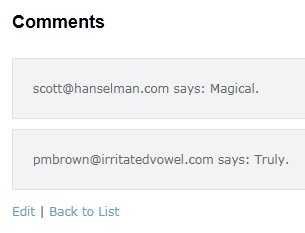
Again, back to the Package Management Console:
Install-Package microsoft-web-helpers
This is an interesting package, however, as it's filled with Razor Helpers that are great for using in ASP.NET Web Pages (that's the simpler stuff that you see in WebMatrix). These are effectively WebMatrix Helpers. But, since they are Razor and this is all ASP.NET, they work nicely.
@Gravatar.GetHtml(comment.Author)
Then, I just F5 in the browser...and:
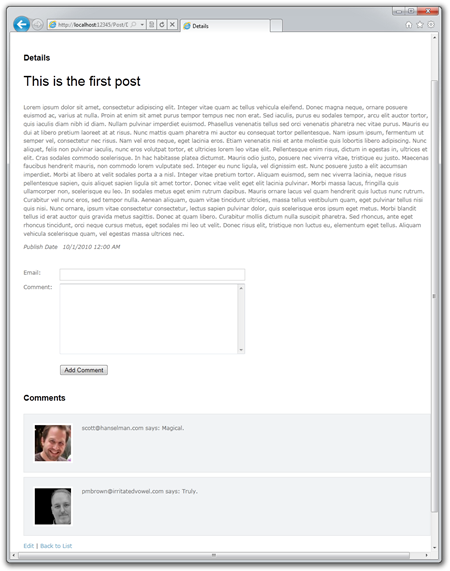
Finally in my demo I added Windows Live Writer support using Charles Cook's XML-RPC library, much like I did in this recent blog post. That's more involved so I'll talk about that other day.
Conclusion
Things are coming together nicely with Visual Studio 2010 plus Microsoft "Unnamed Package of Web Love." There's more to come and more needed, like Database Migrations.
In the short term, the MvcScaffold package is a 0.2 prototype. I think it could be the beginnings of an interesting generic scaffolding that could be extended by the community (you could share CodeTemplate folders) and extended to do Tests, BDD, whatever. We are interested in your thoughts about how T4-based dynamic-using templates could be used along with Razor, SQLCE4, EF Code-First as well as the pile of awesome Open Source Libraries getting added to the http://www.nuget.org project daily.
Your thoughts, Dear Reader?
Related Links
Hosting By

 It's PDC week and Scott's on campus with Phil Haack talking about ASP.NET MVC 3 RC and the
It's PDC week and Scott's on campus with Phil Haack talking about ASP.NET MVC 3 RC and the  Building quality software is never easy. It requires skills and imagination. We cannot promise to improve your skills, but when it comes to User Interface and developer tools, we can provide the building blocks to take your application a step closer to your imagination. Explore the leading UI suites for ASP.NET AJAX,MVC,Silverlight,Windows Forms and WPF. Enjoy developer tools like .NET Reporting, ORM, Automated Testing Tools, Agile Project Management Tools, and Content Management Solution. And now you can increase your productivity with JustCode, Telerik’s new productivity tool for code analysis and refactoring. Visit www.telerik.com.
Building quality software is never easy. It requires skills and imagination. We cannot promise to improve your skills, but when it comes to User Interface and developer tools, we can provide the building blocks to take your application a step closer to your imagination. Explore the leading UI suites for ASP.NET AJAX,MVC,Silverlight,Windows Forms and WPF. Enjoy developer tools like .NET Reporting, ORM, Automated Testing Tools, Agile Project Management Tools, and Content Management Solution. And now you can increase your productivity with JustCode, Telerik’s new productivity tool for code analysis and refactoring. Visit www.telerik.com.


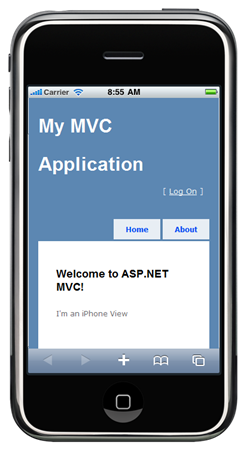
 Earlier this year I posted on
Earlier this year I posted on 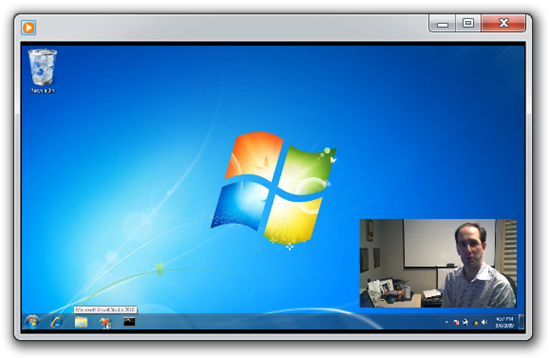
 For existing videos or videos you're making on a regular basis, the idea is that you'll just drop them in a folder and a task will automatically kick off. You have total control over everything, to be clear, but for the out of the box example, I'm going to drop my ScottGu WMV into a folder and two things will pop out:
For existing videos or videos you're making on a regular basis, the idea is that you'll just drop them in a folder and a task will automatically kick off. You have total control over everything, to be clear, but for the out of the box example, I'm going to drop my ScottGu WMV into a folder and two things will pop out: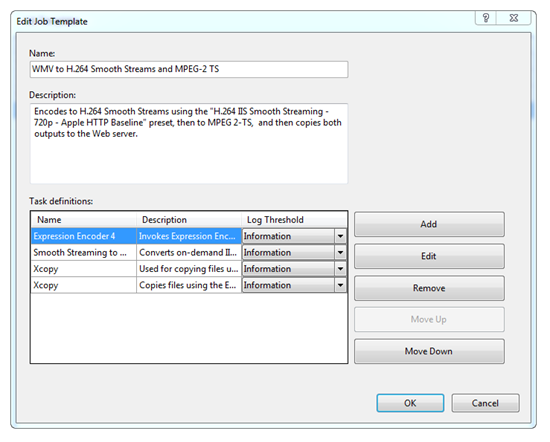
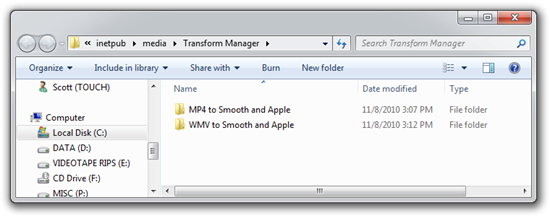
%20Manager_thumb.png)

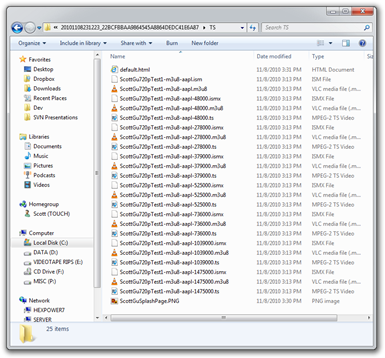



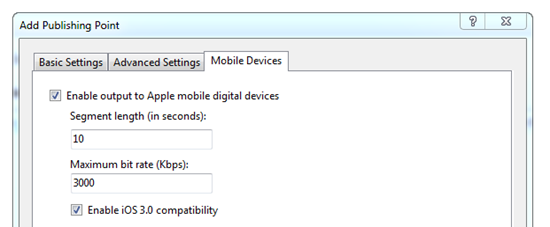
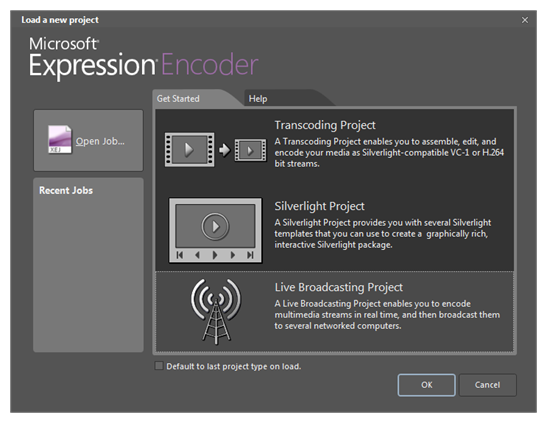
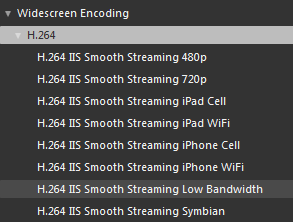

_c6bf3453-f87b-4d12-a0c3-7690dfe497bf.png)
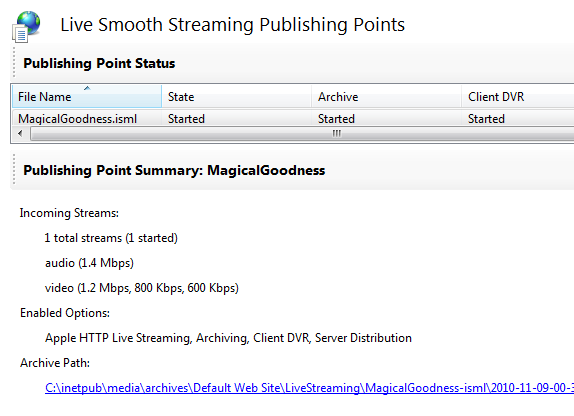
 I had a lovely time in Redmond this last week attending Microsoft's PDC (Professional Developer's Conference) 2010.
I had a lovely time in Redmond this last week attending Microsoft's PDC (Professional Developer's Conference) 2010.  Note that you have a new folder created in your project called CodeTemplates. I've
Note that you have a new folder created in your project called CodeTemplates. I've _thumb.png)
_thumb.png)


_thumb.png)

